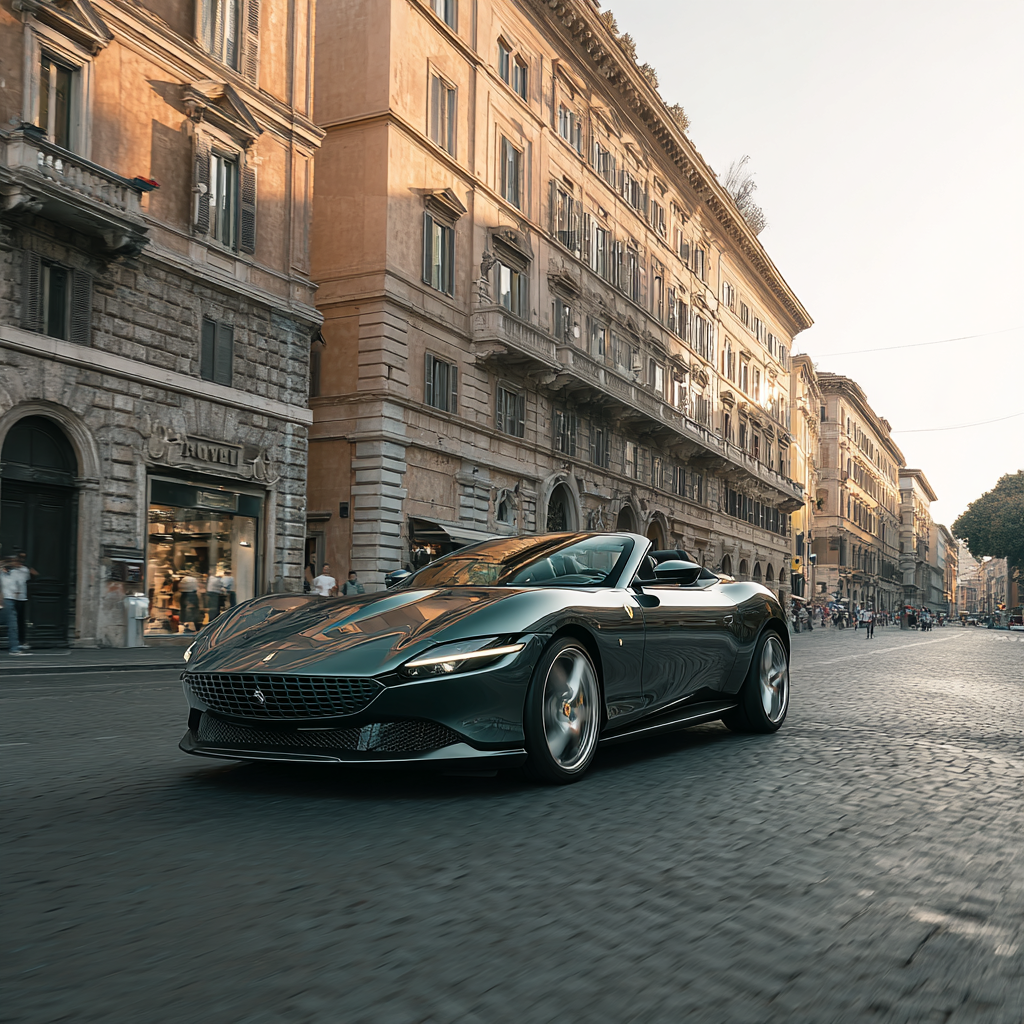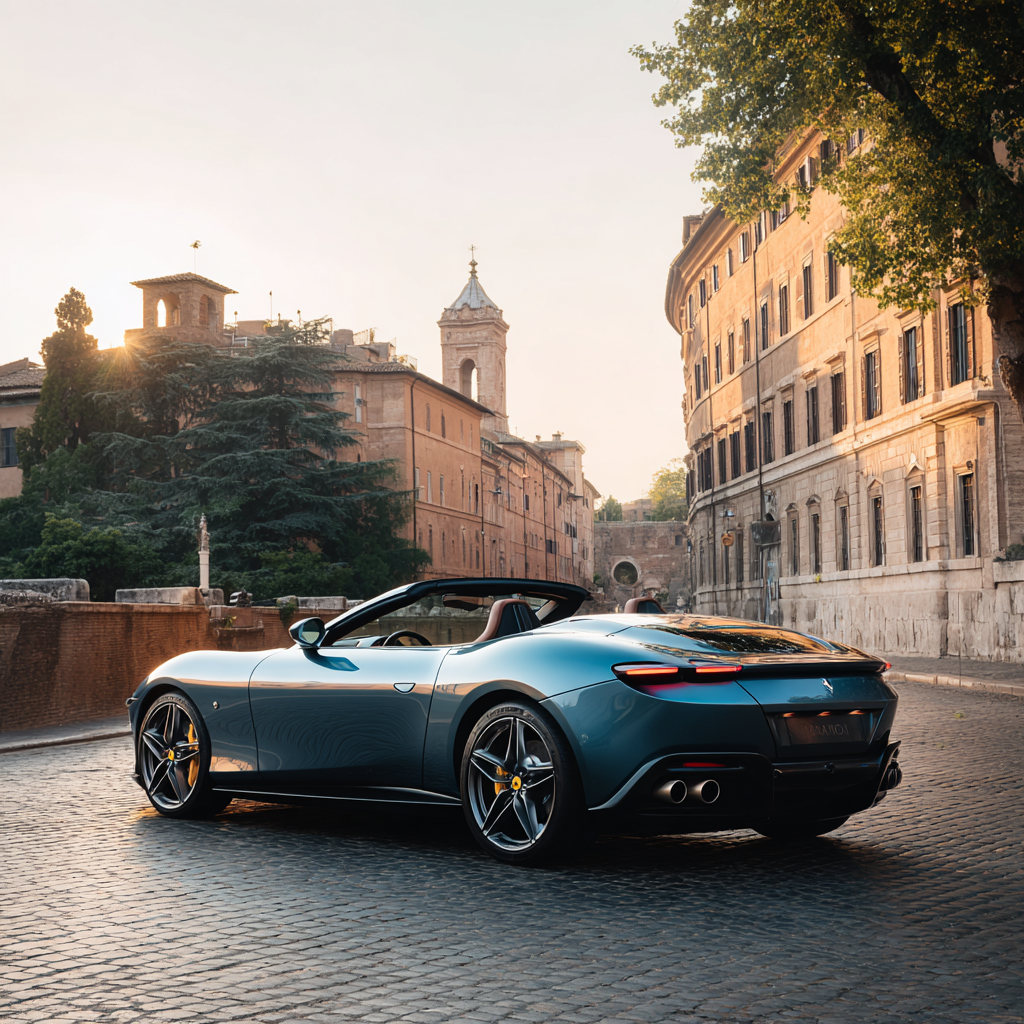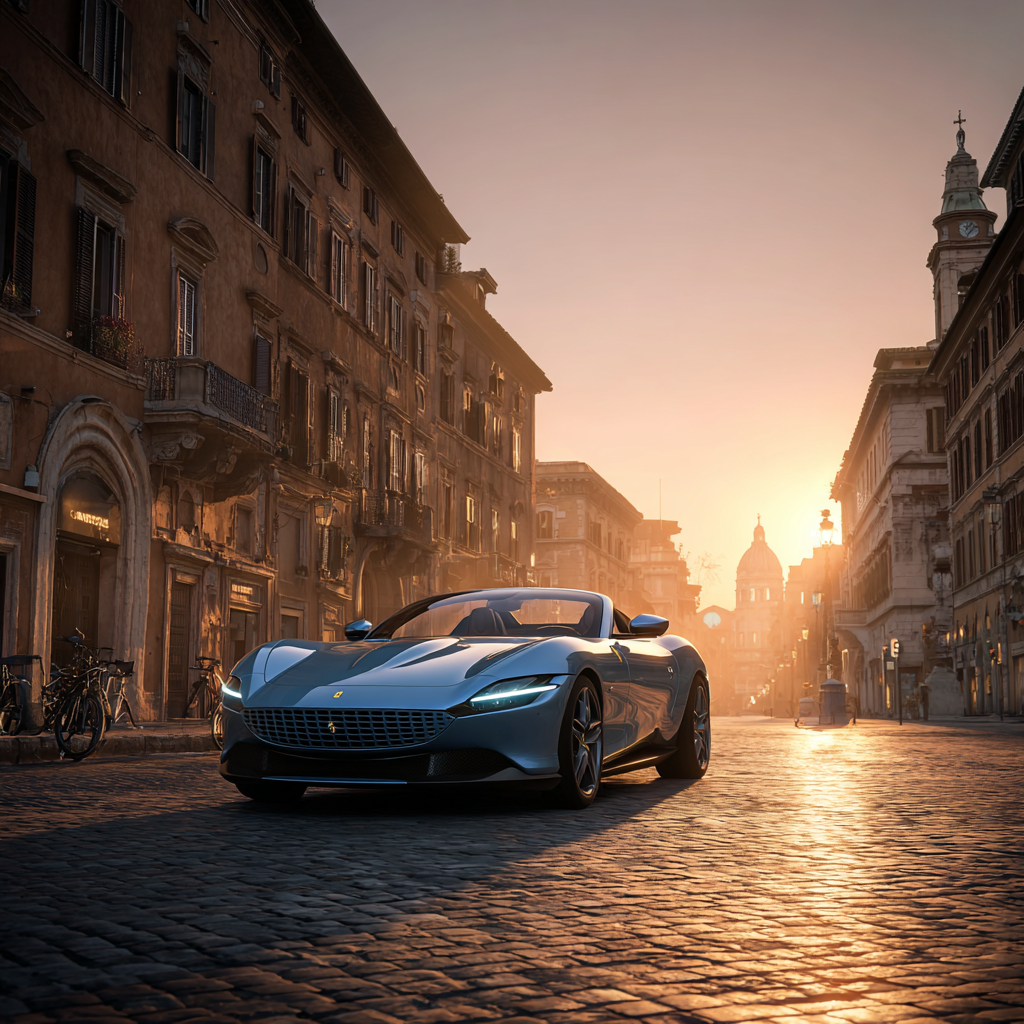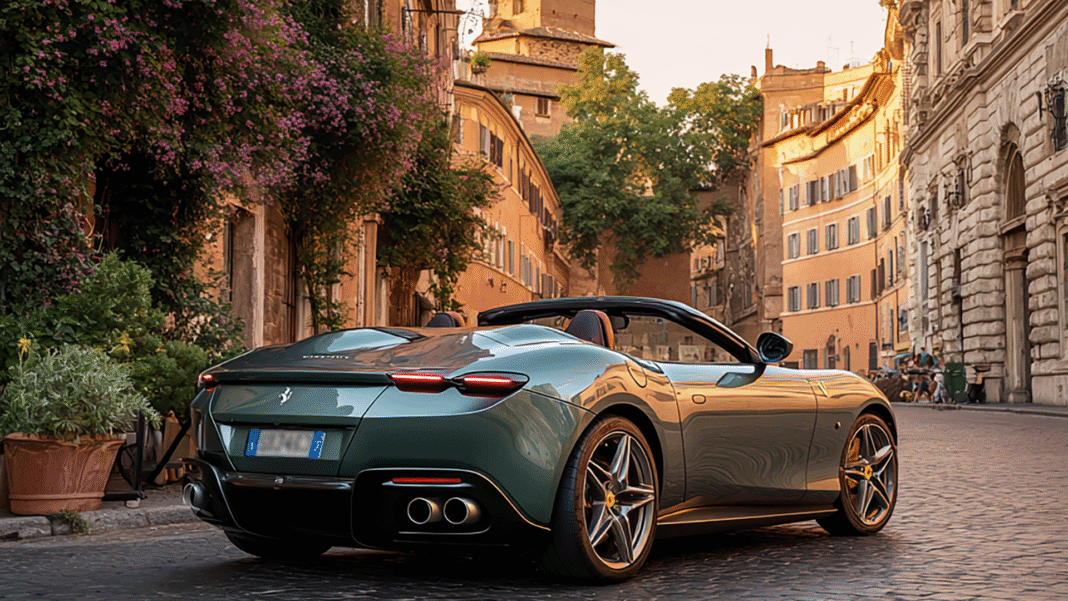In the quiet hours of a Sunday morning, the roads that weave along Italy’s Amalfi Coast lie mostly empty. A soft Mediterranean breeze rolls off the sea, fluttering the bougainvillea that climbs across stuccoed walls. The sunlight breaks gently across the undulating hills, casting elongated shadows across the cobblestone paths. At this moment, a driver in a Ferrari Roma Spider shifts into second gear and presses the accelerator. The sound of the twin-turbocharged V8 echoes through the cliffs, not in a roar, but a clean, controlled resonance—like a promise kept.
The Roma Spider, first revealed in 2023, continues Ferrari’s tradition of grand touring vehicles, but does so in a form that departs from the aggressive lines and sharp edges associated with the brand’s track-focused models. It favors elegance over flamboyance. In 2025, it stands as a compelling mix of refined design, accessible performance, and engineering that feels intentional, not overdone. In a world where vehicles increasingly compete for attention through complexity, the Roma Spider finds its voice in simplicity.

A Return to Grand Touring Philosophy
The Roma Spider embodies Ferrari’s grand touring spirit. While many associate Ferrari with raw track performance and limited-production specials, the Roma Spider is designed to be driven—often and comfortably. It is not meant to sit idle in a private garage or roll off a trailer onto a racing circuit. It is made for long, sweeping drives. It invites its owner to choose the road less taken.
Unlike the SF90 or the 296 GTB, the Roma Spider avoids hybrid complexity. It is powered by a traditional internal combustion engine—Ferrari’s award-winning 3.9-liter twin-turbocharged V8. This engine has been refined and proven across multiple Ferrari models, delivering 612 horsepower at 7,500 rpm and 561 lb-ft of torque from 3,000 rpm. Power is delivered through an eight-speed dual-clutch transmission that has trickled down from the SF90. This unit is compact, responsive, and refined, enabling the car to shift with precision while offering comfortable cruising when needed.
0 to 62 mph takes just 3.4 seconds. The top speed exceeds 199 mph. These numbers are fast by any standard, but they are not the focus. What sets the Roma Spider apart is how it gets there—with stability, poise, and the unmistakable fluidity of a well-balanced grand tourer.

Design: Sculpted Elegance
Flavio Manzoni, Ferrari’s Chief Design Officer, approached the Roma Spider with restraint. The objective was not to overwhelm but to achieve timelessness. The lines of the car are clean, purposeful, and uninterrupted. The silhouette is long and low, defined by the curvature of the fenders and the proportions of a classic front-mid engine sports car.
The front grille features an understated mesh pattern integrated into the body color, avoiding the bold contrast seen in some recent supercars. The headlights are narrow and focused. There are no gaping air ducts or exaggerated fins. The absence of excessive detailing does not diminish its character; rather, it emphasizes it.
With the top up, the Roma Spider looks almost identical to the Roma coupe. This is not by accident. Ferrari opted for a soft-top roof instead of a folding hardtop, a choice that harkens back to earlier convertibles in Ferrari’s history. The five-layer fabric roof folds in just 13.5 seconds at speeds up to 37 mph. It adds a mere 185 pounds over the coupe, a modest gain given the structural reinforcement required for a convertible.
When lowered, the soft top disappears neatly under a tonneau cover, preserving the smooth profile. Ferrari has gone to great lengths to reduce wind turbulence and cabin noise, with a patented wind deflector system integrated behind the rear seats. The result is a comfortable open-air driving experience at highway speeds, without the usual chaos of wind and buffeting.

The Interior: A Balance of Technology and Tradition
Inside, the Roma Spider follows Ferrari’s new interior architecture—driver-focused, yet luxurious. The cockpit features a dual-zone layout, with a clear delineation between driver and passenger areas. The dashboard curves toward the center console, wrapping around the driver in a low, sporty seating position.
Materials are top-tier but understated. Leather is hand-stitched, and metal elements are used sparingly for buttons and trim. The gear selector mimics the iconic gated shifter of past Ferraris, but in a modern form.
Ferrari’s digital interface includes a 16-inch curved display for the instrument cluster and a vertically mounted center screen for navigation and settings. While earlier versions of this system faced criticism for sensitivity and responsiveness, updates for the 2025 model have improved usability.
Physical buttons are almost entirely absent. Climate control, infotainment, and driver settings are managed through touch-sensitive controls. For purists, this is a point of contention, but Ferrari’s software is gradually becoming more intuitive. A small display on the passenger side shows speed, gear selection, and media information—inviting engagement from co-drivers without overwhelming them.
Everyday Usability
Perhaps the most surprising element of the Roma Spider is its practicality. It has a usable trunk, measuring 9 cubic feet, more than enough for weekend luggage. The rear seats, while not spacious, can accommodate small bags or a jacket. They are not designed for adult passengers, but they offer flexibility uncommon in this category.
Visibility is good for a convertible sports car. The driving position is low but not claustrophobic. Parking sensors, a 360-degree camera system, and adaptive cruise control are all included as standard features in 2025. These additions make the Roma Spider suitable for daily use, not just weekend drives.
The ride quality is another standout. Thanks to Ferrari’s magnetorheological dampers, the Roma Spider adapts to road conditions in real-time. In comfort mode, it absorbs rough pavement and expansion joints with composure. Switch to sport mode, and it firms up, offering precise body control through corners.
Who Is It For?
The Ferrari Roma Spider is not aimed at the track-day enthusiast or the collector chasing limited-edition badges. It is for someone who appreciates aesthetics as much as performance. Someone who drives often, and values the journey over lap times. It’s the car you take to dinner in Monaco or cruise along the Pacific Coast Highway with the top down and a calm sea beside you.
It occupies a unique place in Ferrari’s current lineup. The Portofino M, which it effectively replaces, was more entry-level. The 812 and SF90 models are more extreme, both in performance and price. The Roma Spider sits in the middle—a refined, stylish GT that makes a statement without shouting.
It is not a cheap car, but its value lies in its balance. In 2025, it starts at around $275,000, depending on options. For that, buyers receive a Ferrari that is approachable, daily-drivable, and infused with genuine character.
Ownership and Options
As with all Ferraris, customization is encouraged. Owners can select from an extensive palette of exterior colors, interior leathers, stitching patterns, and wheel finishes. Ferrari’s Tailor Made program allows even greater personalization, with access to historic color schemes, unique materials, and one-off details.
Maintenance is simplified through Ferrari’s seven-year free maintenance program, which covers regular service intervals. This is an increasingly valuable offering, given the complexity of modern sports cars and the costs associated with premium service networks.
Fuel economy, while not a major selling point, is reasonable for a V8 sports car. The Roma Spider achieves an estimated 17 mpg city and 22 mpg highway. While buyers are unlikely to be influenced by fuel savings, it speaks to Ferrari’s efforts to deliver performance without excess.
Closing Thoughts
The Ferrari Roma Spider is a study in contrast. It is powerful but calm. Technologically advanced but simple in spirit. Luxurious but unpretentious. In 2025, when much of the automotive industry leans heavily on hybrid systems, oversized screens, and overly complex interfaces, the Roma Spider delivers clarity.
It does not chase numbers. It does not need wings or carbon-fiber overload. It delivers something more lasting—elegance, ease, and the kind of driving experience that feels natural and rewarding. The Roma Spider is not meant to be rare or revolutionary. It is meant to be used and enjoyed.
And perhaps that is what makes it special. In the end, as the sun sets over a coastal road or a mountain pass, it is not about statistics or track times. It is about the way the wheel feels in your hand, the subtle pull of the engine as you exit a corner, and the satisfaction of knowing you could drive forever.

